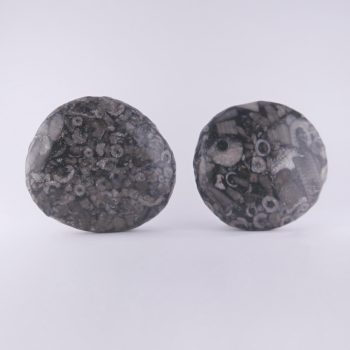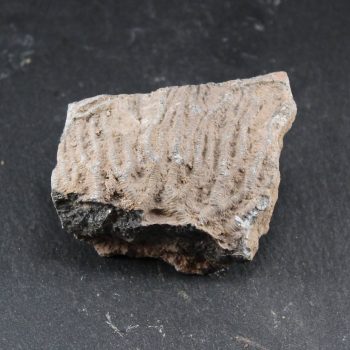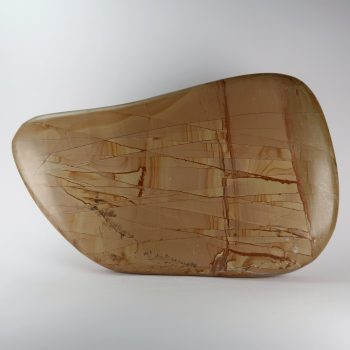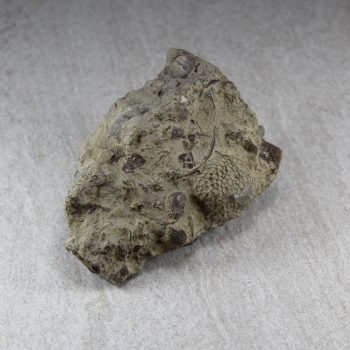Limestone
Limestone is a fairly common sedimentary rock, typically composed of Calcite and Aragonite – forms of Calcium carbonate.
It is extremely important in industry for various things but primarily used for the production of Lime, important for things like cements, waste-water treatments, and chemical animal feeds.
Most of the pieces we sell are fossiliferous; most Limestone is made up of tiny fossil remains from corals – but larger fossils do occur too, often shells and crinoids.
Showing all 4 results
-

Crinoidal Limestone palmstones
Price range: £2.00 through £4.00 -

Crinoidal Limestone Specimens
£7.95 -

Polished Paesina limestone slices
Price range: £10.00 through £12.50 -

Wrens Nest fossils from Dudley, UK
£30.00
Appearance, Uses and History
Limestone is primarily used in industry, with huge amounts of it used in construction, agriculture, and as a raw material in a range of industries.
Many buildings are made partially or entirely out of limestone, and is used to make lime based mortars and cements. Many famous buildings in London are made from Portland Limestone – which gave its name to Portland cement – now one of the worlds most widely used substances.
In addition, many castles and churches around the UK and Europe are made of Limestone.
Limestone is heavily used in the production of Lime, which is known for treating soil, waste water purification, smelting, the production of quicklimes, cements, and mortars. It is also used as food supplements, and to remove impurities during metal smelts.
Limestone is affected by acidic solutions, which includes acid rain – which has caused serious damage to some structures, statues, etc made from the material.
Geologically this can cause an interesting landscape known as karst. A karst landscape is formed from limestone, which slowly dissolves in rainwater. This creates an almost alien fractured, sharp landscape.
Locales
I’m not listing locales – honestly, lets just say the entire planet. 🙂
There are a few highly fossiliferous exposures or sites that are important due to the fossils preserved within, however – the Much Wenlock, Wrens Nest and Great Orme in the UK stand out, as does the Solnhofen Limestone exposure in Germany.
Mineralogy
Hazards and Warnings
Almost all rocks, minerals (and, frankly, almost all other substances on earth) can produce toxic dust when cutting, which can cause serious respiratory conditions including silicosis.
When cutting or polishing rocks, minerals, shells, etc, all work should be done wet to minimise the dust, and a suitable respirator or extraction system should be used.
Translations
Arabic:
- حجر الكلس
Hindi:
- चूना पत्थर
Portuguese:
- calcário
Bengali:
- চুনাপাথর
Indonesian:
- batu kapur
Punjabi:
- ਚੂਨਾ ਪੱਥਰ
English:
- limestone
Italian:
- calcare
Russian:
- известняк
French:
- calcaire
Japanese:
- 石灰岩
Spanish:
- caliza
German:
- Kalkstein
Korean:
- 석회암
Thai:
Gujurati:
- ચૂનાનો પથ્થર
Mandarin and Traditional Chinese:
- 石灰石
Urdu:
- چونا پتھر
Further Reading / External Links
- https://www.mindat.org/min-49160.html
- https://en.wikipedia.org/wiki/Limestone
- https://geology.com/rocks/limestone.shtml
